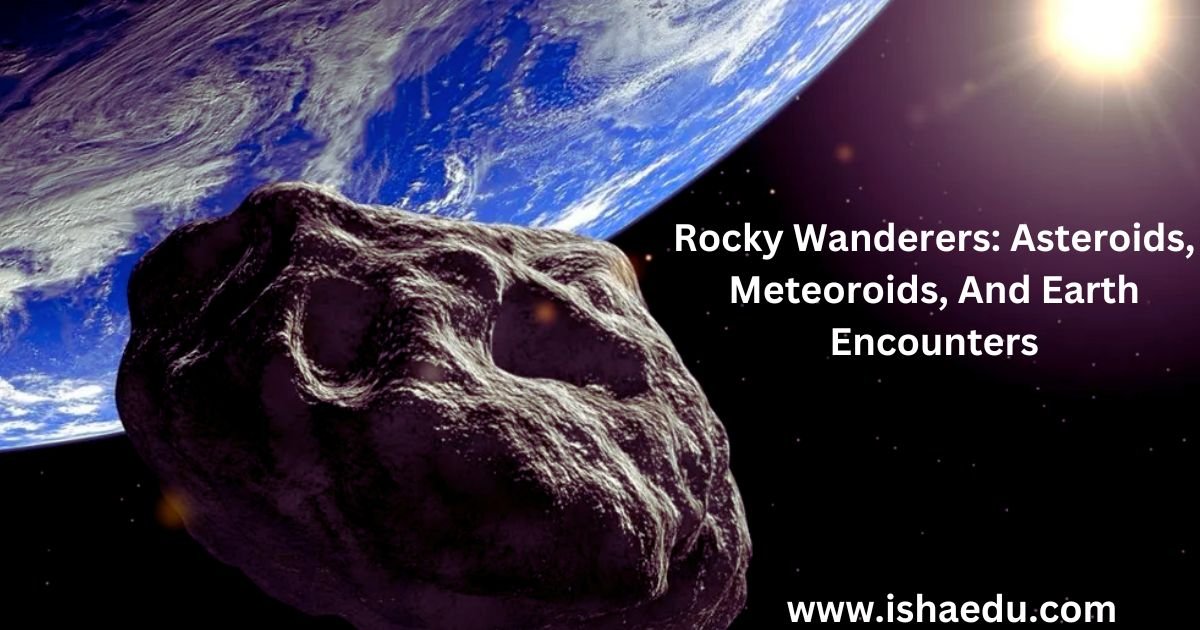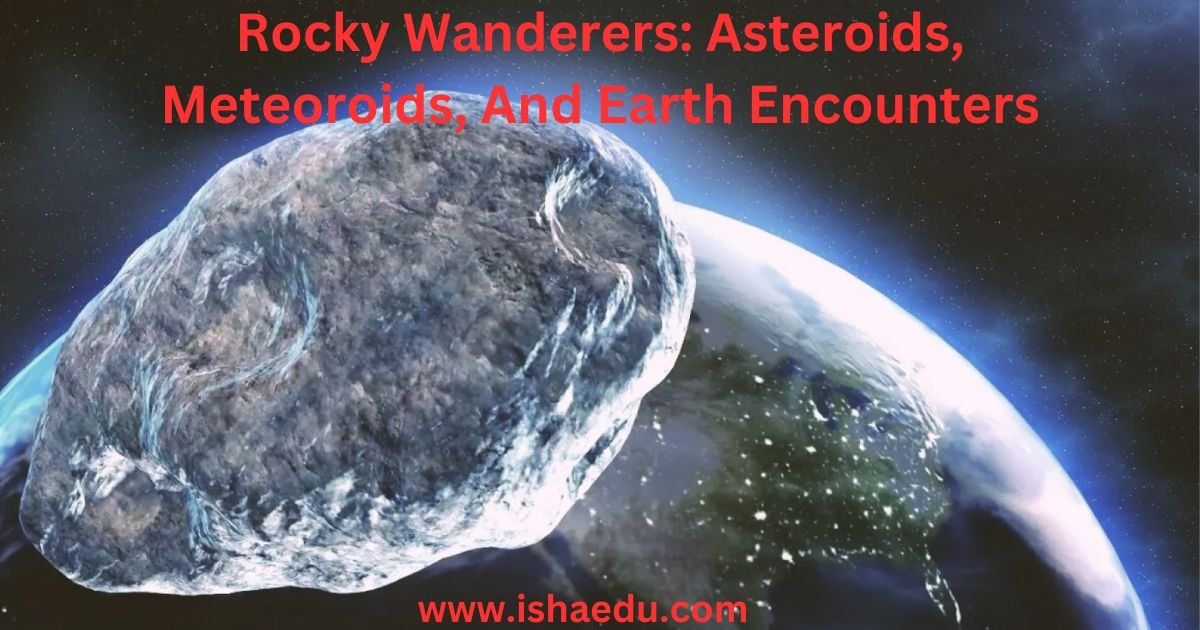Rocky Wanderers: Asteroids, Meteoroids, And Earth Encounters

Rocky Wanderers: Asteroids, Meteoroids, And Earth Encounters
Our solar system is a dynamic realm, teeming with a diverse array of celestial bodies. Among them are asteroids, remnants of the planet-formation process, captivating as they orbit the sun, with some venturing close to Earth.
Asteroids
Asteroids are airless, rocky worlds spanning from a few meters to hundreds of kilometers in size. Predominantly located in the asteroid belt, between Mars and Jupiter, some asteroids deviate from this path, occasionally intersecting with the inner solar system and even Earth.
Meteoroids
Meteoroids are small rocky or metallic bodies in space, typically ranging in size from a grain of sand to a few meters in diameter. These objects are remnants of comets or asteroids and are on trajectories that bring them into Earth’s atmosphere. When a meteoroid enters the Earth’s atmosphere, it experiences intense friction and heating due to the air resistance.
As the meteoroid travels through the Earth’s atmosphere, it transforms into a bright streak of light known as a meteor or shooting star. The friction with the air causes the meteoroid to heat up and glow, creating a visible streak across the night sky. Most meteoroids are relatively small and burn up completely during this atmospheric entry, never reaching the Earth’s surface.
If a meteoroid is large enough to survive the journey through the atmosphere and reach the Earth’s surface, it is then referred to as a meteorite. Meteoroids, meteors, and meteorites are all part of the fascinating cycle of celestial objects interacting with Earth’s atmosphere.
Near-Earth objects (NEOs)
Near-Earth Objects (NEOs) encompass asteroids or comets whose orbits bring them within 5 million kilometers of Earth’s orbit. While many pose no threat, Potentially Hazardous Asteroids (PHAs), due to their size and proximity, require vigilant tracking and understanding to bolster planetary defense.
When an asteroid hits Earth’s atmosphere
Upon entry into Earth’s atmosphere, asteroids undergo intense friction and heat, disintegrating to form meteoroids. These luminous meteoroids streak across the sky as meteors or shooting stars. Typically, most meteoroids burn up entirely before reaching the Earth’s surface, but larger ones may survive, transforming into meteorites.
The role of astronomers like Krisztián Sárneczky
Astronomers such as Krisztián Sárneczky are pivotal in studying NEOs and safeguarding our planet. Armed with powerful telescopes, they track and characterize these objects, unraveling their orbits and potential impact risks. Sárneczky, with noteworthy contributions including NEO discoveries and impact predictions, exemplifies the significance of their work.
Conclusion
Asteroids constitute a natural facet of our solar system. While some bear potential risks, comprehension, and monitoring are imperative for planetary defense. The diligent efforts of astronomers like Sárneczky enhance our awareness and readiness for potential encounters with these celestial wanderers. As guardians of our cosmic neighborhood, astronomers contribute significantly to our understanding and protection against the unpredictable trajectories of these rocky visitors

FAQs
Has a meteor ever hit Earth?
Yes, meteors have hit Earth throughout history, from tiny ones burning up in the atmosphere to big ones leaving craters. The most famous impact is the Chicxulub event, which many believe wiped out the dinosaurs. Scientists study these events to understand them and prepare for future ones.
Will an asteroid hit Earth in 2024?
No known asteroid is guaranteed to hit Earth in 2024.
Astronomers are constantly tracking near-Earth objects (NEOs) and monitoring their trajectories. While some NEOs do have a small chance of impacting Earth in the future, none of them pose a significant threat in 2024.
What’s the closest meteor to Earth?
There’s no single “closest meteor” to Earth since they burn up quickly and constantly change distance. But some near-Earth objects (NEOs) get super close! Check out NASA’s NEO website to explore these fascinating objects.
Is there a possibility of Earth being impacted by an asteroid in the year 2036?
Scientists are constantly tracking asteroids and predicting their trajectories. As of today, February 2, 2024, there are no known asteroids that have a high probability of hitting Earth in 2036.
What will happen on April 13, 2036?
It’s too early to say what will happen on April 13, 2036. While there are some interesting possibilities on the calendar, a lot can change between now and then.
Will an asteroid hit Earth in 2026?
There’s no known asteroid on track to hit Earth in 2026. Scientists continually track these objects, but predicting their paths years can be tricky. Reliable sources like NASA and ESA keep people informed – no need to worry based on rumors!
What will happen to Earth in 2024?
Predicting the future is tricky, but we can make some educated guesses about what might happen to Earth in 2024.
Climate change: Extreme weather, rising sea levels, and biodiversity loss are ongoing concerns.
Technology: Advancements in renewable energy, space exploration, and AI are possible.
Society and politics: Elections, social movements, and economic changes are on the horizon.
Remember, these are just potential scenarios. Stay informed, be critical of sensationalized claims, and focus on what you can control today.
What is the asteroid warning for 2023?
There were no confirmed asteroid impacts on Earth in 2023, and experts don’t predict any imminent threats. Organizations like NASA and ESA track near-Earth objects and warn the public well of any danger.

Join Us :
Click Here To Get Technology And Entertainment Notification:




